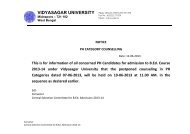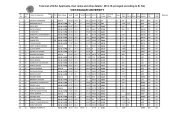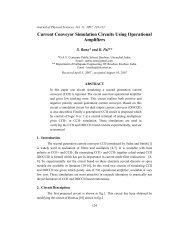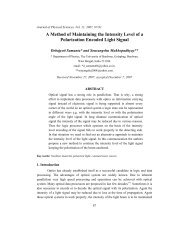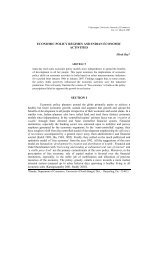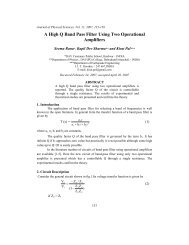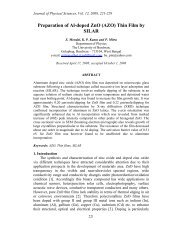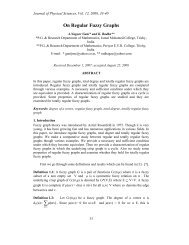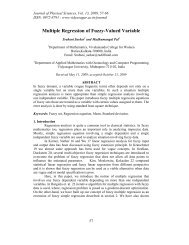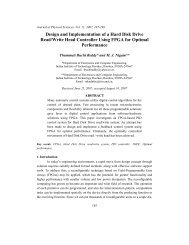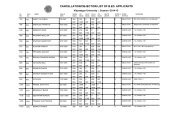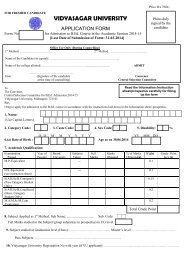VIDYASAGAR UNIVERSITY JOURNAL OF COMMERCE
VIDYASAGAR UNIVERSITY JOURNAL OF COMMERCE
VIDYASAGAR UNIVERSITY JOURNAL OF COMMERCE
Create successful ePaper yourself
Turn your PDF publications into a flip-book with our unique Google optimized e-Paper software.
CORPORATE RESTRUCTURING THROUGH MERGERS AND ACQUISITIONS: A CASE STUDY<br />
than small bank mergers. Pilloff and Santomero undertook a study on bank mergers and<br />
they observed a little evidence of bank mergers obtaining efficiency gains or other related<br />
performance or wealth enhancing gains. In another study conducted by Cornett and<br />
Tehranian (1992), some superior post merger performance was registered. This study was<br />
conducted on 30 bank acquisitions for the period from 1982 to 1987 including increased<br />
cash flows on assets, enhanced employee productivity and asset worth. Kwan and Eisenbeis<br />
(1999) analyzed bank consolidations between 1989 and 1996 in their study. The have<br />
reported mixed evidence of efficiency as well as performance effects. Schenk examined the<br />
performance of mergers in banking institutions with the help of ex-ante and ex-post data. He<br />
concluded that mergers among large banks and takeover of small banks by large banks are in<br />
a position to create positive returns for shareholders.<br />
Date base and Methodology<br />
The present study has been conducted on ICICI Bank Ltd. This study is mostly based on the<br />
financial data procured from secondary sources. Several reliable and authentic authorities,<br />
books, corporate financial reporting and articles have been consulted for collecting data.<br />
Moreover, “CAPITALINE 2000” database package has also been used for procuring<br />
financial data used in this study. This study has covered a period of 10 years from 1995-96<br />
to 2004-05. The first five-year period (1995-96 to 1999-2000) corresponds to the pre-merger<br />
period and the next five-year period (2000-01 to 2004-05) is related to the post-merger<br />
period.<br />
In this study, EVA is calculated with the help of the following formula:<br />
EVA=NOPAT – WACC * (CE),<br />
where NOPAT denotes Net Operating Profit After Tax,<br />
WACC represents Weighted Average Cost of Capital, and<br />
CE stands for Capital Employed.<br />
Cost of equity and cost of debt have been calculated for computing WACC. Following the<br />
Stern- Stewart recommendation, cost of equity has been derived under the CAPM model.<br />
According to CAPM, K e =R f +ß (R m -R f ),<br />
where R f = Risk free rate of return.<br />
R m = Market return, and<br />
K e = Cost of equity.<br />
In the present study, 10-year treasury gold bond rate has been taken as risk free rate, which is<br />
9%. For eliminating volatility of market return, long-term market return has been considered<br />
here. For computing market return, J.R. Verma Committee used data for the period 1.7.1990<br />
to 31.06.1998, which model has been considered in this study. Mallik and Rakshit (2005)<br />
conducted a study to compute market return. They have calculated annualized daily return<br />
(%), annualized weekly return (%), annualized monthly return (%) and yearly return. They<br />
have noticed wide fluctuation in all types of returns, which are caused mainly due to<br />
82 Vidyasagar University Journal of Commerce



